25 November 1941 – A Universal Carrier crew from the 1st Polish Corps is towing a Mark XVII contact naval mine off a beach in Tayport, Scotland. – 1/144 diorama
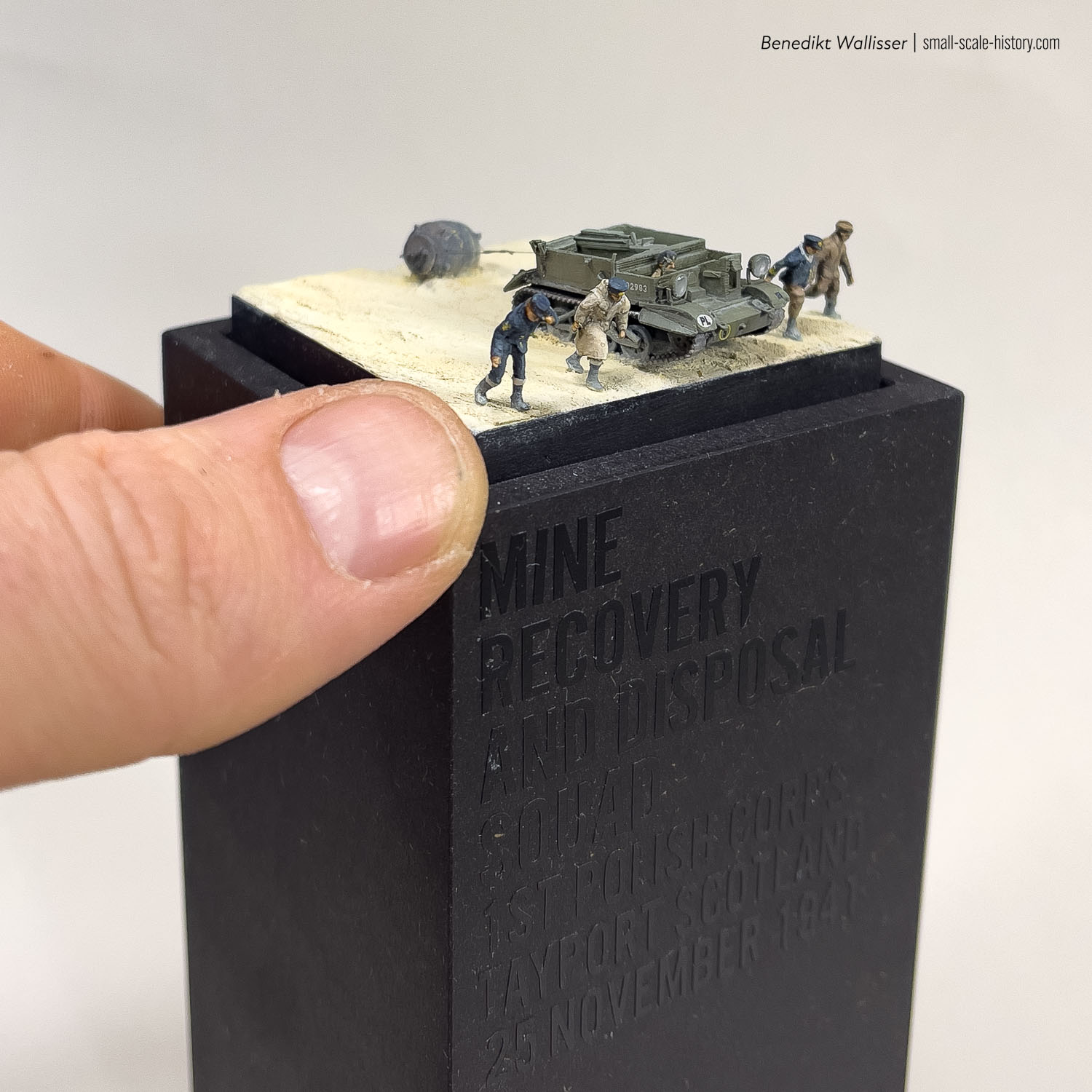
Author:
Born and raised in an artistic household, I can’t remember a time in my life when I wasn’t creating, crafting or drawing. A small, but very well equipped, plastic aircraft scalemodel shop in my small hometown was the reason I got in touch with the hobby when I was about eight years old. It would become the place to spend my pocket money for the next eight years.
From my grandfather, who was a child in WWII, and my grandmother, who gave birth to her first child in 1945, I heard stories from the war time, to which I listened most attentively. My childish mind could not comprehend, that such a bad episode of history could have taken place right where I lived, and where my grandmother had lived back then. So at around ten years old I started to study every book about the war I could find. I wanted to understand what had happened.
My interest in WWII history, my love for the beauty of the aircrafts from that period, plus my constant will to create and to craft led me to focus on WWII aircraft scale modelling very early.
I spent my 20s self educating, starting a freelance career and starting a family. Seldomely thinking about the passion I once had. When covid first hit, and we found ourselves locked down in our flat, I first realised that I had made all my hobbies a business (which now was completely shut down). I was sitting there, anxiety gaining controle of me more and more, and for the first time in years I felt the need to do something just for myself. Something no customer would wait for, something without a deadline, something nobody would care about.
That’s when step by step I reconquered the scale modelling I once had spent a serious part of my childhood with. I never was into big scales, and indeed I had built 144th scale before, but it was then that I completely focused on that scale. It’s the perfect scale. And I will tell you why I am so strongly convinced of it:
The community around this scale is so welcoming, warm and supportive, that it took no time for me to have friends all around the world. Friends I share works and thoughts with, friends to inspire and who inspire me. A dimension of the hobby I never experienced in my childhood days, nor did I expect it in 2020.
I created this website and the small scale history project, because I was searching for a place that didn’t seem to exist on the internet. A place that focuses on historical and aircraft interest the same way it concentrates on scale modelling and aesthetics.
This is my project devoted to small scale modelling and history which I hope to grow to a place of inspiration, beauty, passion and historical awareness. I hope you’re with us on that journey.
Cheers,
Benedikt
hello@small-scale-history.com

25 November 1941 – A Universal Carrier crew from the 1st Polish Corps is towing a Mark XVII contact naval mine off a beach in Tayport, Scotland. – 1/144 diorama
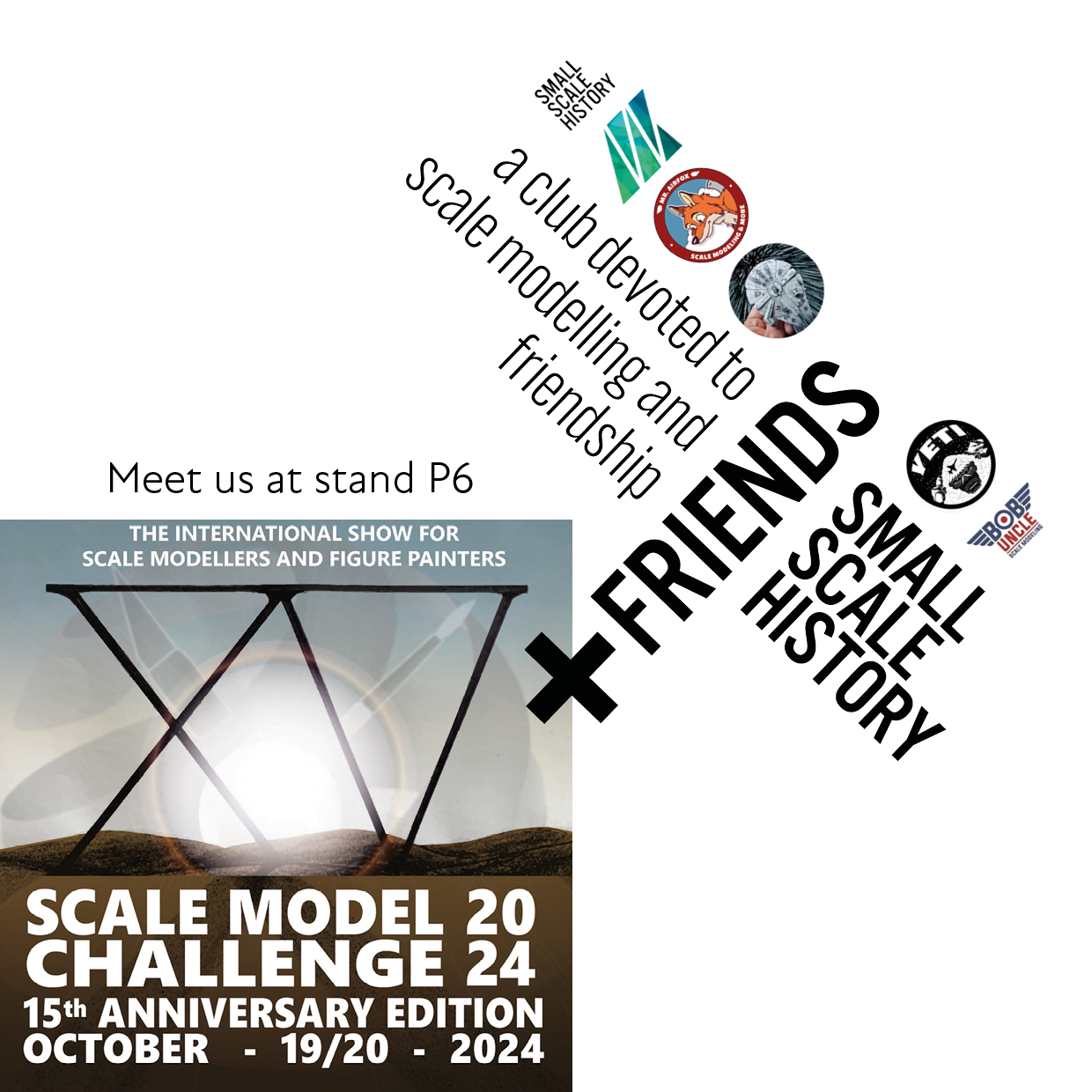
Meet us at stand P6 on Saturday October 19 and Sunday October 20 at Scale Model Challenge in Eindhoven. We’re looking forward to meeting you!
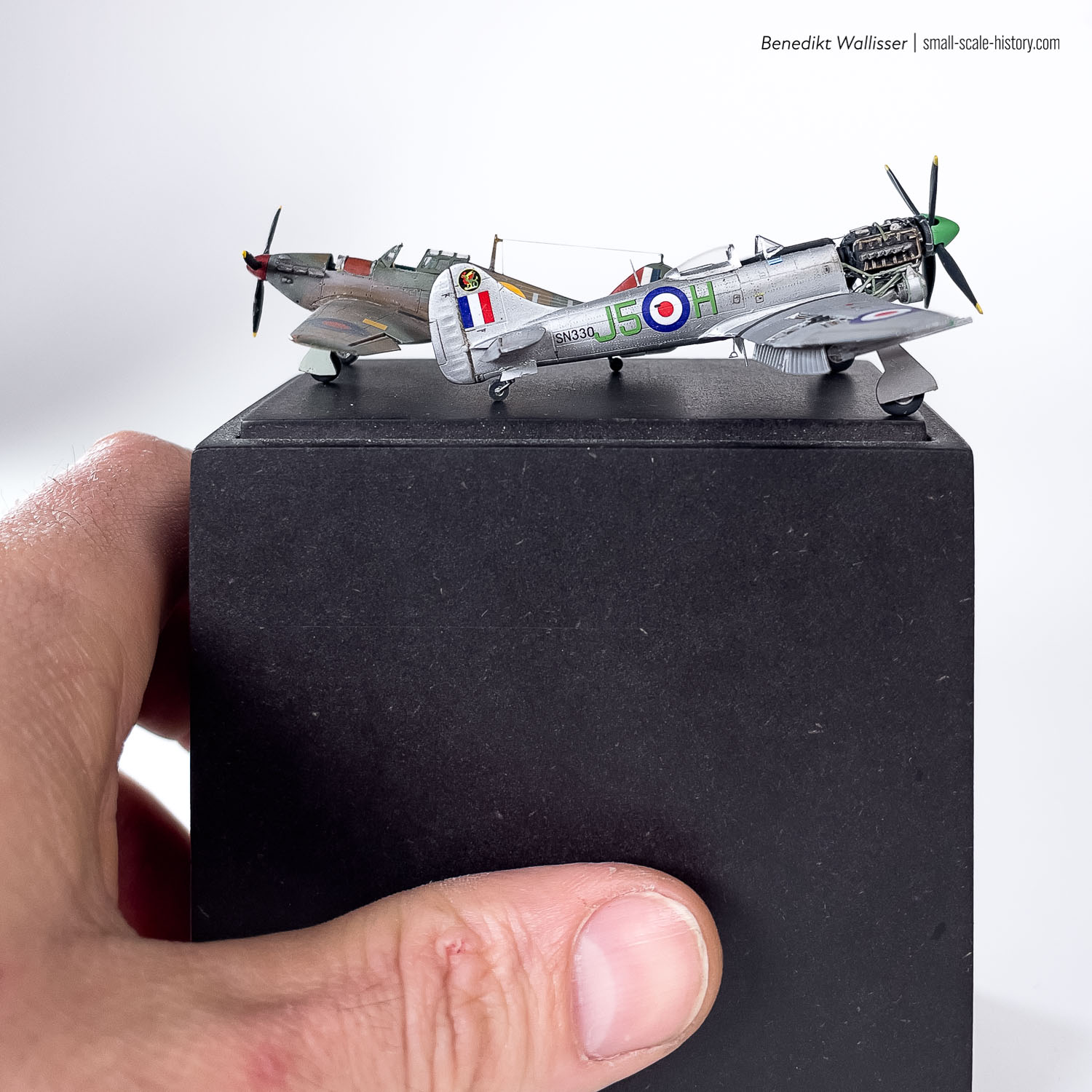
3 Squadron RAF was stationed at Airfield Wunstorf in Germany and operated Hawker Tempest Mk. V aircraft. They were part of the post-war RAF presence in Germany. – 1/144 super detailed scale model
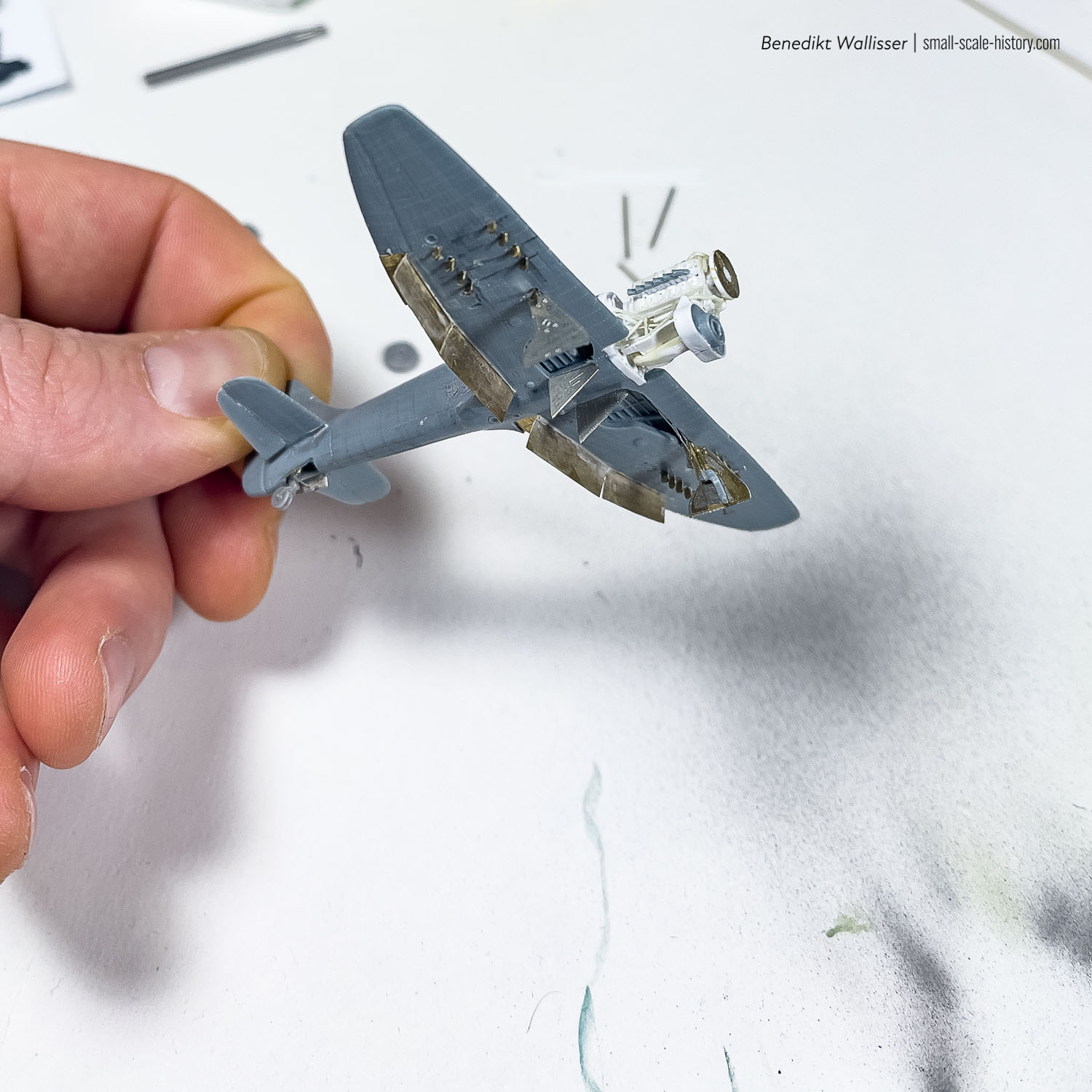
Superdetailing the 1/144 scale Mark 1 Hawker Tempest Mk.V kit with Brengun and Shelf Oddity photo-etched parts, as well as a scratch-built engine.
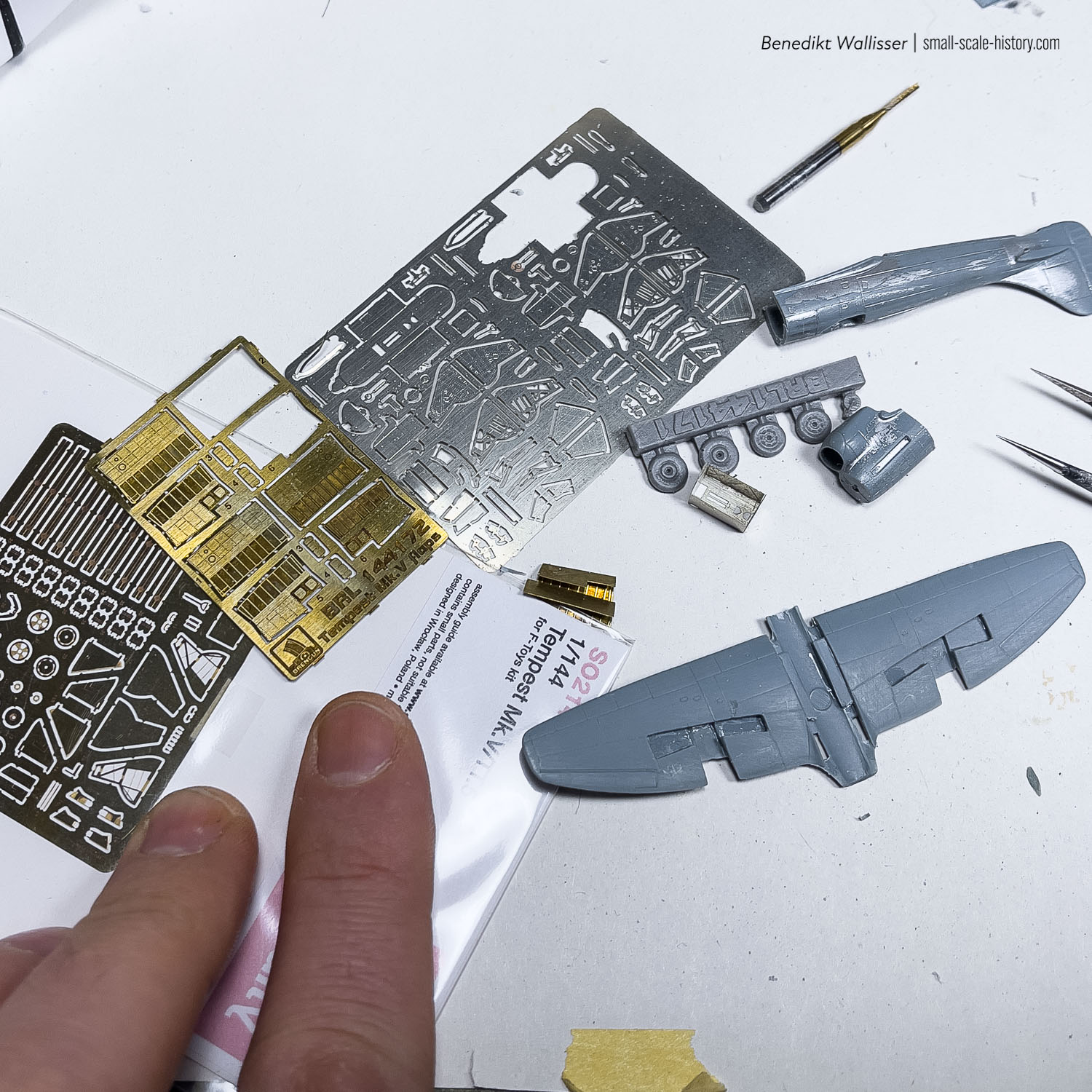
For years F-Toys had been the sole reliable source for a good 1/144 Hawker Tempest kit, but now, Mark I has finally provided a compelling option to the Western markets.
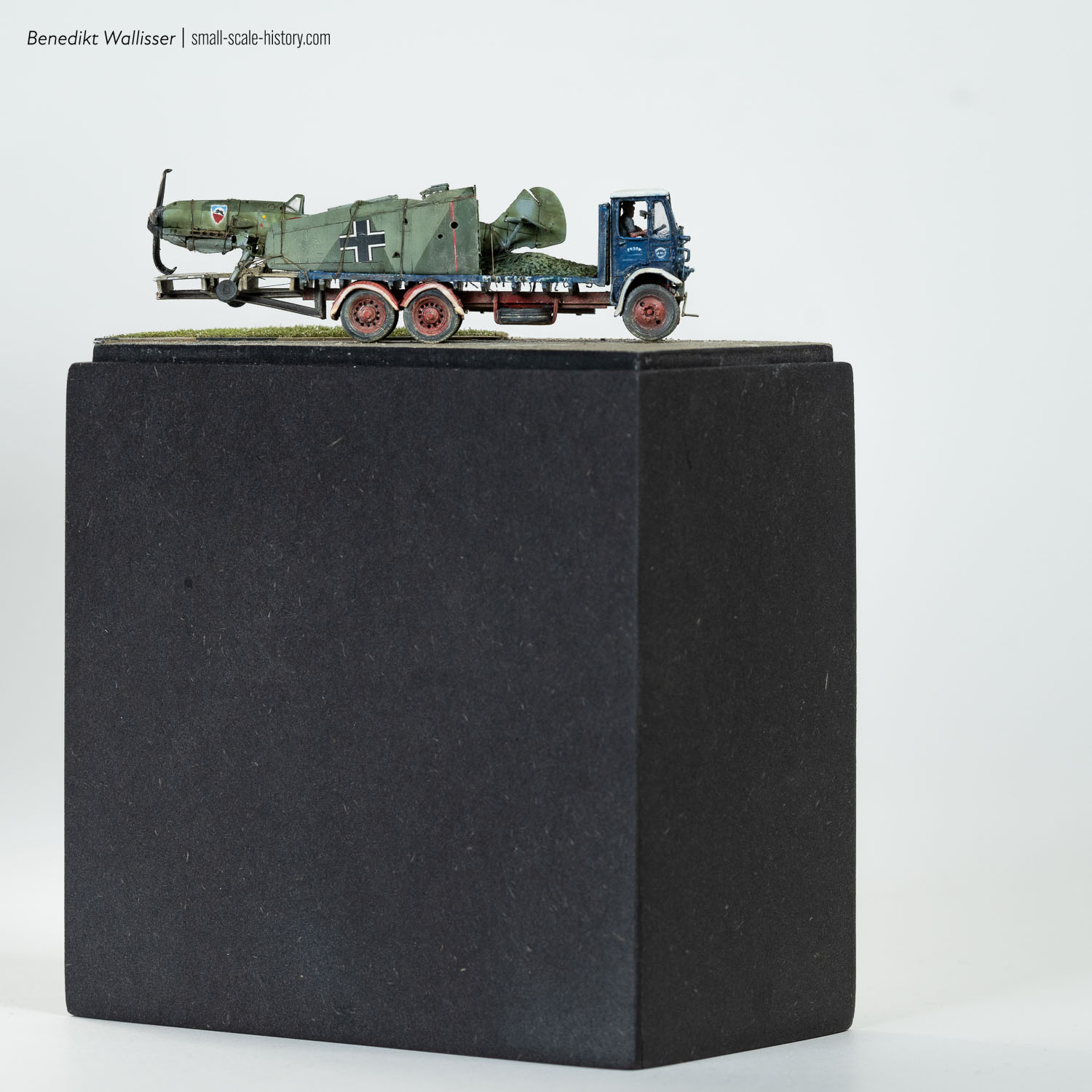
Battle of Britain: On 24 August at 15:45, Luftwaffe pilot Herbert Bischoff, 1st/JG52, crash-lands his Bf-109 E-1 “white 9” near Margate, Kent due to engine failure. The pilot is taken prisoner of war, the wreckage of his Emil is transported away on the flatbed of a civi…
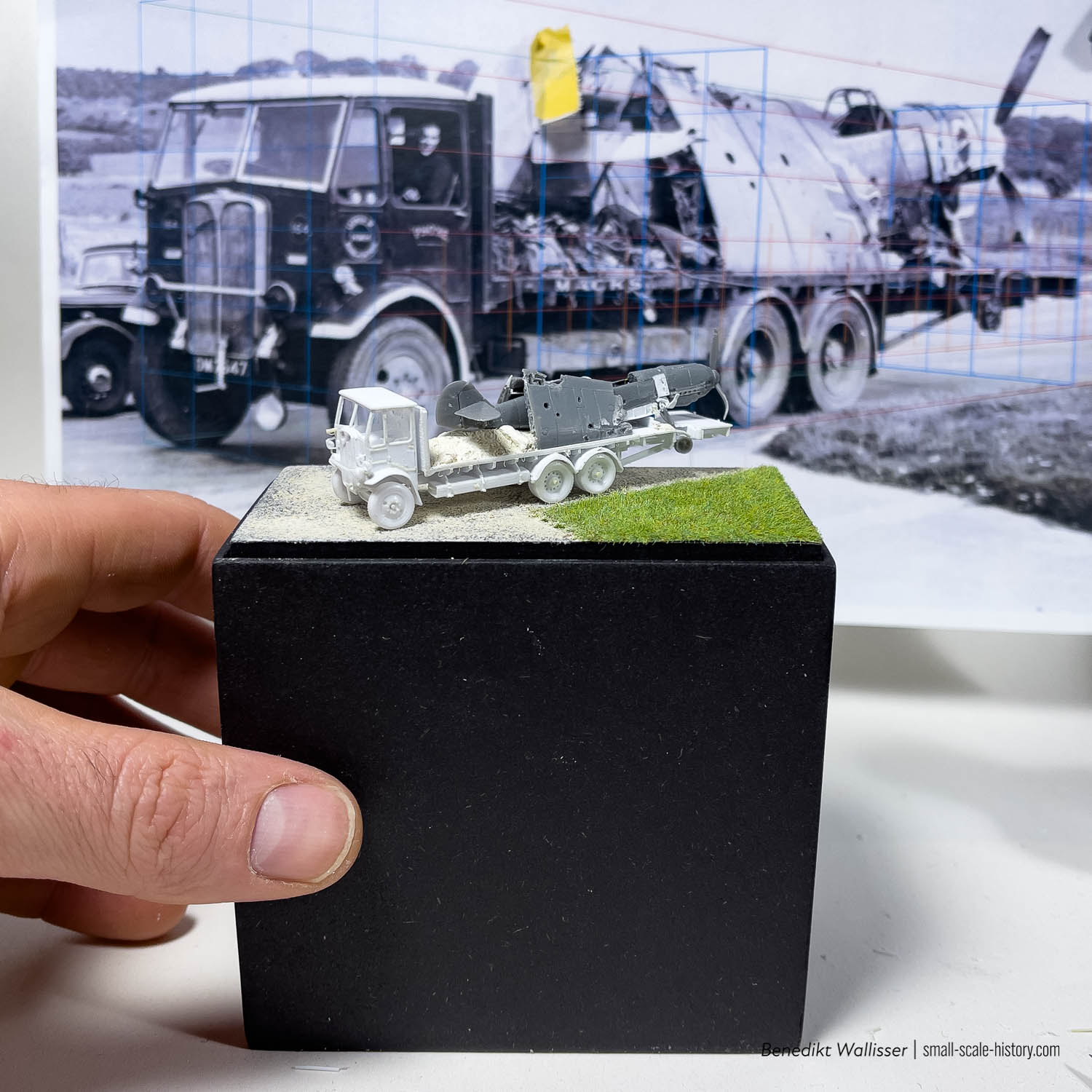
In January 2023 I had found two photos of (what I later identified as) an AEC Mammoth Major 6 Mk.II lorry, with the Bf-109E-1 on it’s flatbed. A scene photographed in August 1940 near Margate, Kent, UK. I searched the internet for plans or more precise references but …
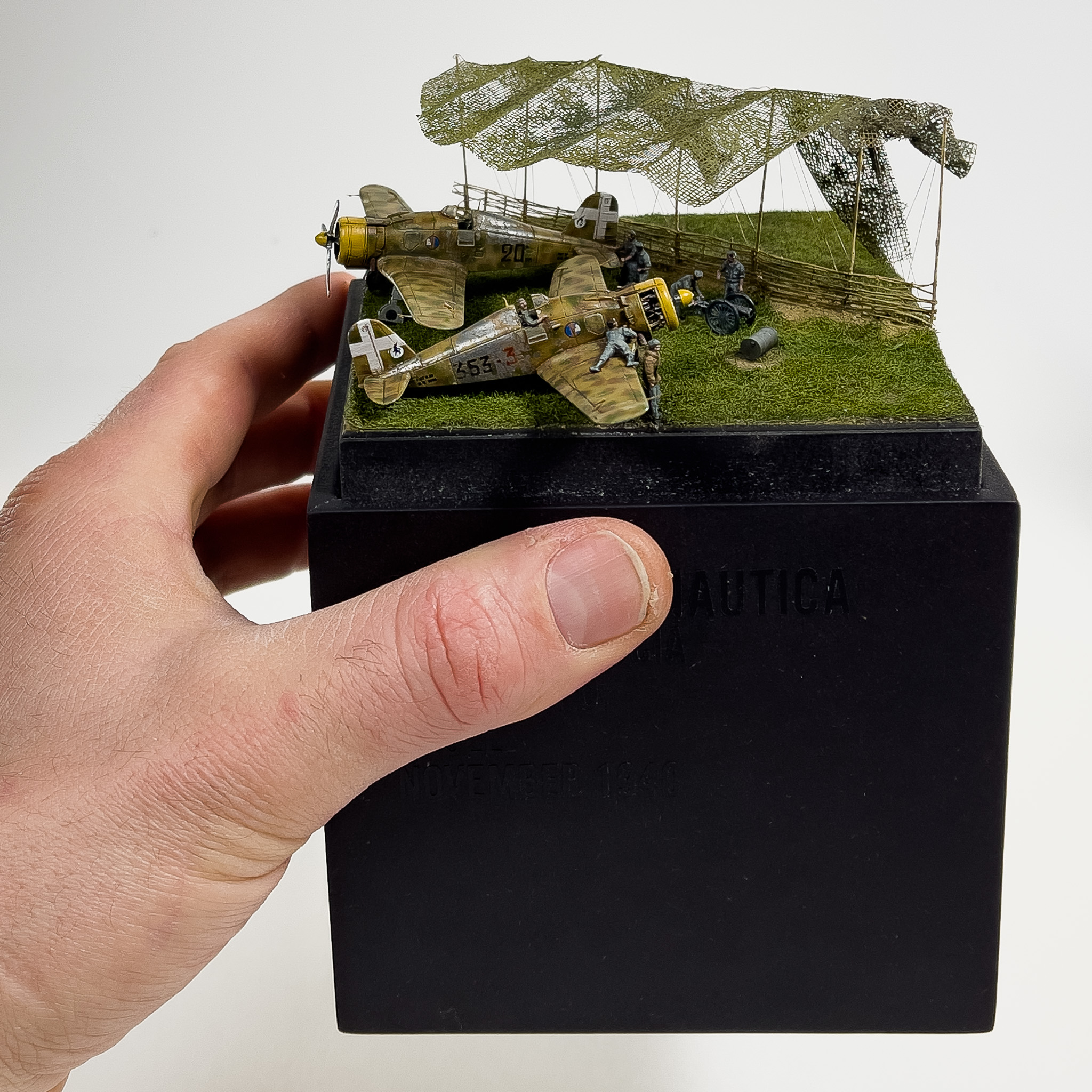
Heavily chipped Fiat G.50bis Freccia of the °20 Gruppo are maintained in Ursel, Belgium, in November 1940 to take part in the Battle of Britain. However, with little impact – 1/144 scale vignette.
Beacon Models debuts with impressive 1:144 kits, featuring a Bf-109E and Spitfire Mk. I. High detail, great fit, Cartograf decals, and painting masks included—ideal for beginners and enthusiasts alike!
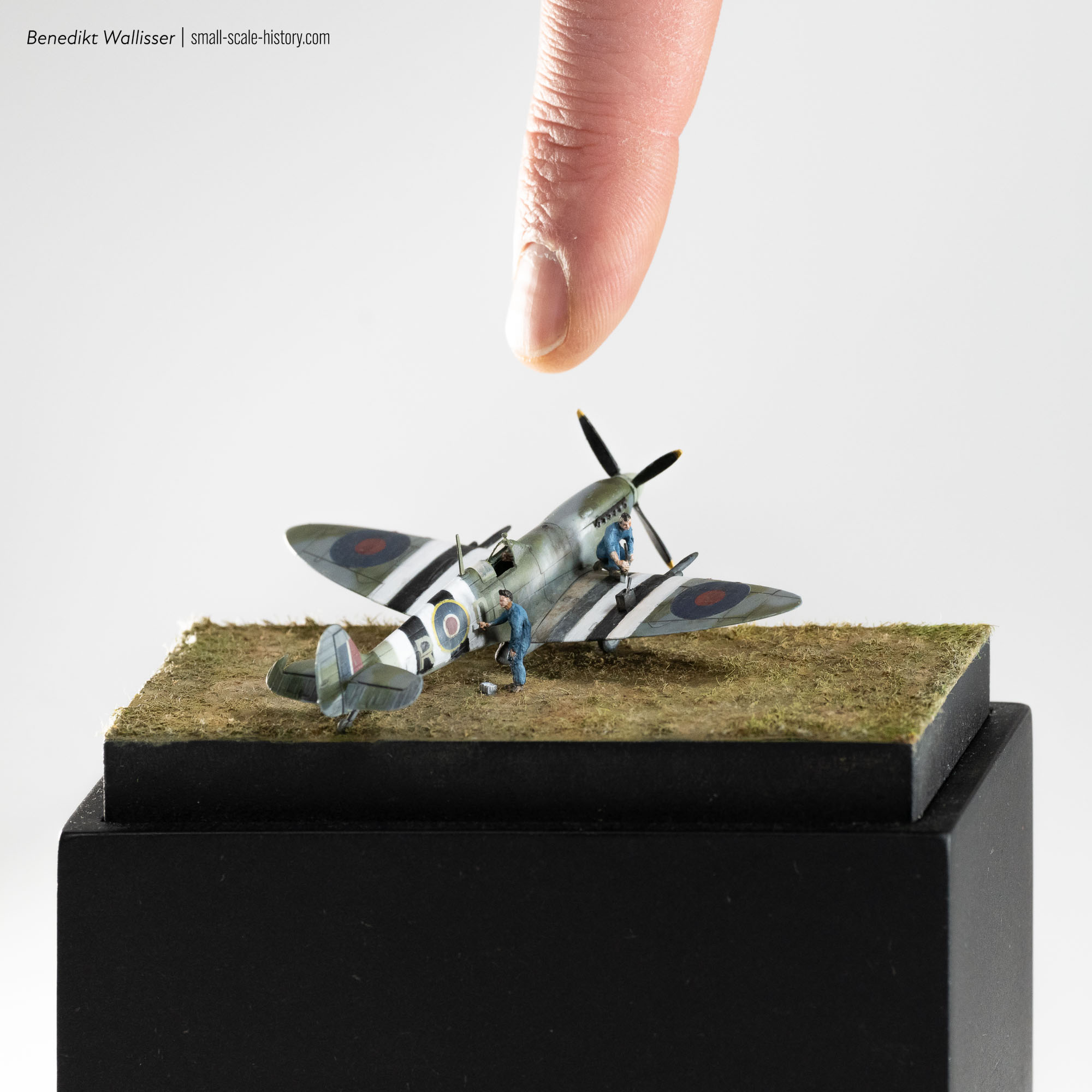
Somewhere in the UK, some day in june 1944. RAF personel paint or repaint invasion stripes on a heavily weathered Spitfire MK IX – 1/144 scale vignette